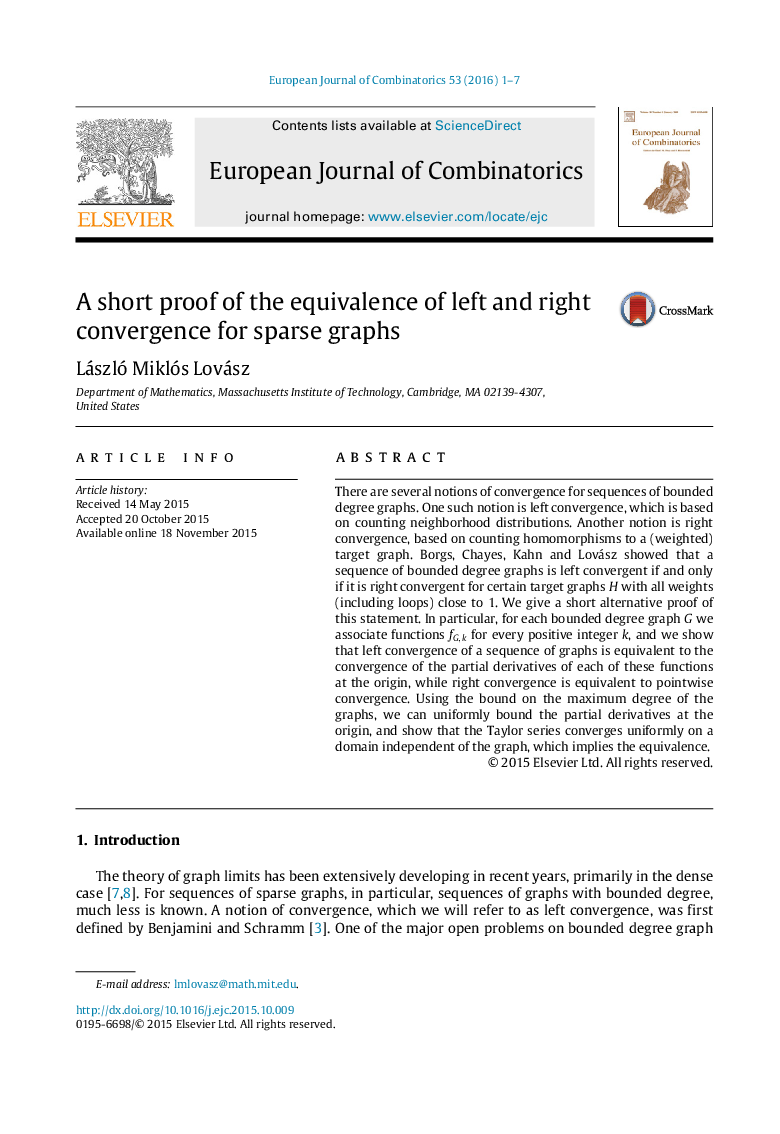| Article ID | Journal | Published Year | Pages | File Type |
|---|---|---|---|---|
| 4653316 | European Journal of Combinatorics | 2016 | 7 Pages |
There are several notions of convergence for sequences of bounded degree graphs. One such notion is left convergence, which is based on counting neighborhood distributions. Another notion is right convergence, based on counting homomorphisms to a (weighted) target graph. Borgs, Chayes, Kahn and Lovász showed that a sequence of bounded degree graphs is left convergent if and only if it is right convergent for certain target graphs HH with all weights (including loops) close to 1. We give a short alternative proof of this statement. In particular, for each bounded degree graph GG we associate functions fG,kfG,k for every positive integer kk, and we show that left convergence of a sequence of graphs is equivalent to the convergence of the partial derivatives of each of these functions at the origin, while right convergence is equivalent to pointwise convergence. Using the bound on the maximum degree of the graphs, we can uniformly bound the partial derivatives at the origin, and show that the Taylor series converges uniformly on a domain independent of the graph, which implies the equivalence.
